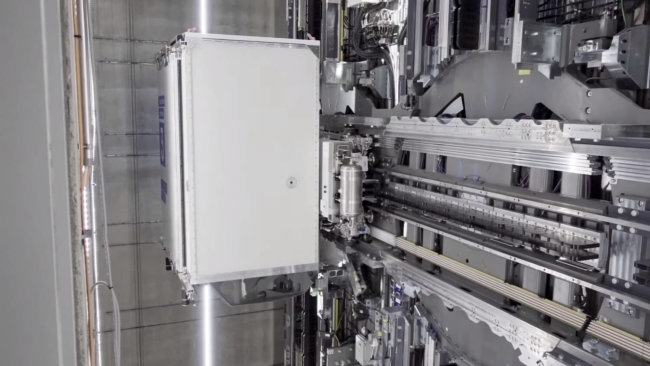
One of the biggest difficulties facing engineers and builders of skyscrapers, is not how to make it so that the whole structure is reliable and durable. One of the biggest challenges is how to create a convenient system of movement within such buildings. Therefore, to search for ways to improve efficiency, ease of construction and even the construction of taller buildings there are companies such as ThyssenKrupp, which is working on a complete revision of the concept of elevators in skyscrapers, so that they can move not only vertically, but also horizontally.
The usual design of elevators means that the cab will move straight up or down, mounted on very rugged cables. For not very high buildings, this scheme works almost perfectly, but it is necessary to take the building higher and the waiting time following the bodice increase exponentially. So now in modern skyscrapers often you can find two systems of elevators: one serving only the lower floors and the other only the upper.
Video blogger Tom Scott has recently visited a test site of ThyssenKrupp, which is a 250-meter tower, inside of which at the moment are testing a new Elevator system MULTI. Its main feature is the use of linear induction motors (the same technology used in bullet trains Maglev), which allow the Elevator cabins to move both vertically and horizontally.

Avoiding the use of cables not only saves on the amount of infrastructure needed to operate the elevators, but in the long term will allow to construct buildings of almost infinite length. However, the main difficulty in creating such lifts is like one of their features – the ability to move vertically and horizontally. In this case, you need to come up with a competent guide wiring inside the building and to automate the system so that she could choose the quickest routes to the desired floor.
ThyssenKrupp is well aware that the test and achieve at least that level of security, which have conventional elevators to which mankind are supposed to last 160 years, it may take decades. And yet we believe that one day we will be able to get rid of the painful necessity of waiting for the elevators for a few minutes and come to the fact that the cabin will be activated every 15-30 seconds, without the need for endless button is clicked.
Elevators of the future. It remains only to wait
Nikolai Khizhnyak